Samuel Morland, Magister Mechanicorum
Samuel Morland was born in 1625 in Berkshire, the same year that Charles I ascended to the throne of England. His father was a parish rector. Young Samuel was smart enough to attend Cambridge University in 1644, but his father was too poor to afford the fees. Luckily for Samuel, Cambridge had a system where respectable and smart young men like him could attend the college as “sizars”, paying no fees but instead doing basic menial labour for the college between their studies. [1] It was while he was at university that he first met Samuel Pepys, the man whose diaries remain such a rich source of 17th century history. He was Pepys’ tutor, and apparently did not impress him. In fact Samuel mostly drifted through his years at university without ever doing much, and after nine years he left in 1653 without ever receiving a degree.
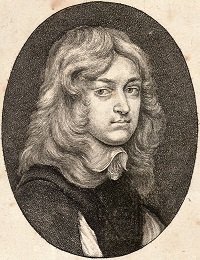
Samuel now took up employment with Bulstrode Whitelocke, a lawyer and politician. For the latter half of his time at university, Samuel had been involved in student politics as a noted supporter of the Parliamentary Party who held power at the time. This was a turbulent time in English history – the English Civil War had broken out in 1642, and in 1648 Parliament had executed King Charles. Bulstrode had been smart enough not to get involved in the King’s trial (which would eventually save his life), but as a result was left without allies in Parliament. He believed that England constitutionally required a King, and when Cromwell refused to take the throne Bulstrode had argued for the return of Charles II – in a subservient position to Parliament, of course. These “radical” ideas had seen him packed off to Sweden to ratify a treaty, and Samuel travelled in his entourage.
When Samuel returned from Sweden he was appointed as the assistant of John Thurloe. Officially Thurloe was the Postmaster General. Unoffically he was Cromwell’s chief spymaster and counter-insurgent. Under his tutelage Samuel learnt the fine art of reading other people’s mail. In 1656 Cromwell dispatched him to Italy to intervene on behalf of the Waldensians. The Waldensians (sometimes known as the Vaudois) are an interesting historical anomaly – a pre-existing heretical sect (founded by Peter Waldo in 1179) who had been living on the fringes of society since the 12th century. Several popes had tried to stamp them out, and many had been burned as heretics, but they clung on. When the Protestant Reformation swept Europe, the Waldensians made common cause with Protestants and began worshipping openly. In 1655 the Duke of Savoy had attempted to force the Waldensians living in his territory to convert to Catholicism. When that failed, he sent his troops in to massacre them.

The resulting campaign of rape, torture and even cannibalism left 1700 Waldensians (including women and children) dead, and outraged most of Europe. Cromwell even threatened to go to war over it, and Samuel was the official messenger conveying this threat. The general climate was such that the King of France (who held the Duke’s fealty) was forced to intervene and to order the Duke to give amnesty to the Waldensians. Unsurprisingly, though, many of them had already fled to Switzerland, and many others chose to follow. Samuel had also brought the proceeds of collections taken in England to assist the surviving Waldensians, and so he wound up spending some time in Geneva administering these funds. He returned to England in December. With him he brought copious notes, and also twenty-one volumes of Waldensian history that one of their pastors had given him to preserve. He donated the books to Cambridge University (fourteen of them survive to this day). Based on them (and his notes) he wrote The History of the Evangelical Churches of the Valleys of Piemont, which also included graphic descriptions (and disturbing illustrations) of the massacres that had just taken place.
Back in England, Samuel Morland’s chief duties consisted of helping John Thurloe foil the plots of the “Sealed Knot”, a secret society of Royalists who conspired throughout the 1650s to restore the monarchy. Their most overt attempt had been “Penruddock’s Rebellion” in 1655, after that failed (and Penruddock was executed) they became more covert. By the end of the decade, the Knot was thoroughly compromised. Thurloe had not one but two agents embedded within it. One, Francis Corker, was a spy he had sent to infiltrate it. The other, Sir Richard Willys, was a founding member of the Sealed Knot who he had managed to uncover and “flip”. Between the two he was kept well informed of the plots of the Royalists. Thurloe even used Corker to trick a member of the Sealed Knot (a Doctor Hewit) into importing propaganda from the Continent, then arrested him for possessing them. Thurloe brutally tortured Doctor Hewit to death by drilling into his skull, which Samuel had to watch (and hear). This was too much for Samuel, and he made the decision to defect to the Royalists – not a decision he made lightly. He had a good income from his work, and he got married around this time. All of that, and his life, he decided to put on the line.
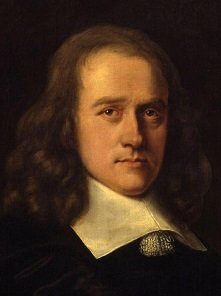
Samuel’s opportunity to exercise his new loyalty soon came when he managed to discover a plot between Thurloe and Sir Richard Cromwell to assassinate King Charles II. (Richard had inherited the Lord Protectorship from his deceased father Oliver.) Their plan was to create a fictitious army of rebels in Sussex, and to entice Charles to come and lead it (and hopefully to bring his brothers as well). The royals would be surreptitiously killed, and Parliament would be secured. In one account, Samuel was actually discovered listening by the plotters, and pretended to be asleep. Cromwell was prepared to kill him regardless, but Thurloe interceded and saved his life. Samuel passed the information on to the Royalists he knew hadn’t been corrupted, also letting them know how deeply they had been infiltrated. Luckily for Samuel, Richard was forced to resign his position in May of 1659. For the rest of the year Samuel continued passing information to the Royalists, but he soon began worrying that he was pushing his luck too far. In early 1660 he fled England to join the Royals on the continent, bringing with him all the secret papers he could get his hands on.
Charles II was restored to the throne in May of 1660. In order to try to heal the wounds of the Civil War, he issued a general pardon to those who had fought against him (though those involved in his father’s death were specifically not pardoned). For his service, Samuel became Sir Samuel Morland, Baronet of Sulhamstead Bannister in his home county of Berkshire. To Samuel’s disappointment, however, this didn’t come with the fortune he’d hoped for. Under Thurloe he had earned a thousand pounds a year, but Charles only gave him five hundred, and his court duties required him to spend most of that on clothes. For the rest of his life, money would be a constant concern.
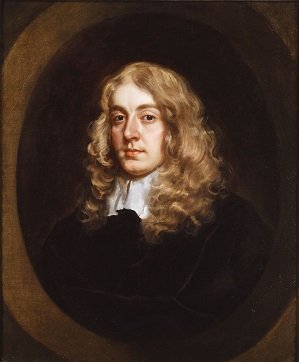
In order to try to earn more money, and to gain prestige at court, Samuel turned his intelligence to the field of mechanical engineering. In 1661 he received a patent for his first invention, a new form of pumping apparatus. http://www.berkshirehistory.com/bios/smorland2.html This was based around the principle of a charge of gunpowder exploding and forcing air out of a valve, creating a vacuum that drew the water up. You might recognise this as a key part of the way an internal combustion engine works, and so Samuel can be seen as a key contributor to the march towards mechanization. Hydrostatics remained a fascination of his, and his various pumps (which included early firefighting appliances) were a mainstay of his inventions. He also did some early work on using steam power to propel ships, though nothing ever came of it.
Samuel did have other inventions, of course. He made several analog calculation devices – engines which used mechanical means to add together things like sums written in pounds, shillings and pence. He may even have created a machine that could multiply and divide in this manner, which would make him the first person to do so. He also created telescopes and mirrors for the King, and invented the hearing trumpet. For these accomplishments, in 1681 Charles declared him the court’s “Magister Mechanicorum” – “Master Mechanic”.
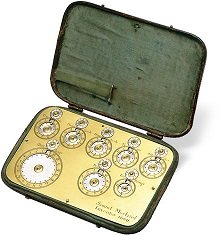
Not all Samuel’s inventions were so benign, and it may have been his more covert devices that won him Charles’ approval. Of these the most famous was his system of devices for intercepting and copying the mail. Samuel had always been part of this operation under Thurloe, and had regarded the methods used (usually just a hot knife under the wax seal of the letter) as unbelievably crude. In 1664 he had lunch with Henry Bennett, the Earl of Arlington, who mentioned that the Post Office was currently being blighted by a new Spanish system of tamper-proof seals. Samuel offered to defeat the seals, and so Bennett gave him a letter sealed “in the Spanish fashion”. Samuel returned several hours later with the original, apparently unopened, and several exact copies – so exact that Bennett found it difficult to tell the real and fakes apart. Once Samuel demonstrated his tricks to the King (and explained how it worked for him – Charles was a curious man) then he received a post at the Post Office opening the mails that were considered noteworthy. Unfortunately for him, the Post Office burned down in the Great Fire of 1666 and his devices were lost.
One other notable piece of spywork that Samuel was involved in was the plot of Claude Roux. Claude was a Huguenot exile in London who conspired to overthrow King Louis XIV of France’s control of the southern part of his kingdom, and set up an independent republic. Quite how Samuel found out about him is unclear, but since Claude claimed to have gained some kind of commitment from King Charles, it’s possibly that the British government chose to play him along while getting Samuel to serve him up to the French. This he did, enlisting a respectable Huguenot noble, the Marquis de Ruvigny, to serve as a hidden witness to Claude’s plotting. (The use of a Huguenot to undermine the plot may have been a way to prevent the consequences of Claude’s scheme rebounding on his community.) Claude’s scheme was actually right on the verge of fruition, but Samuel’s information let the French authorities nip it in the bud. [2] This, combined with his betrayal of Parliament to King Charles II, has led many historians to regard him as “notoriously treacherous”. They bolster this by pointing to Pepys’ description of him, though this was actually what Pepys wrote before he met him as an adult and was based solely on his reputation. Once the two old schoolmates were reunited they actually became quite friendly, and Samuel consulted for Pepys on some of his Admiralty work.
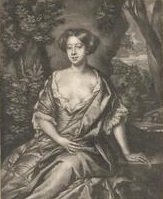
Samuel’s wife died in 1667. He remarried in 1670 to the eighteen-year old Carola Harsnett, but she died in 1674. In 1676 he married the fourteen year old Anne Fielding, but she died in 1680. His last wife Mary Ayliffe was a con-woman, who tricked him into believing she was an heiress when they were married in 1687. Unfortunately for Samuel, not only was she a notoriously profligate woman who ran him deep into debt, but she cheated on him as well. He divorced her for adultery in 1688. This, combined with his losses on several of his inventions (where he spent more developing them than he made) caused him a great deal of hardship. He petitioned the King (who was now William III), and in gratitude for his years of service his original pension of five hundred pounds a year (which he had been forced to sell to cover his debts) was restored. This enabled him to live in some measure of comfort for the rest of his life. Towards the end of his life he went blind, and in gratitude to the churchmen who helped him in his infirmity he made a confession and became surprisingly devout. In 1695 he died. Four years later Thomas Savery produced the first commercially viable steam engine. It made his fortune, and the Magister Mechanicorum who had paved the way for this success was forgotten.
Images via wikimedia except where stated.
[1] Around seventeen years later Isaac Newton would attend Cambridge on the same type of “sizarship”.
[2] Claude went on the run, and was eventually captured in 1669. He severely wounded himself in prison in order to avoid torture and revealing his accomplices, but retained enough strength to shout his defiance from the gallows.
